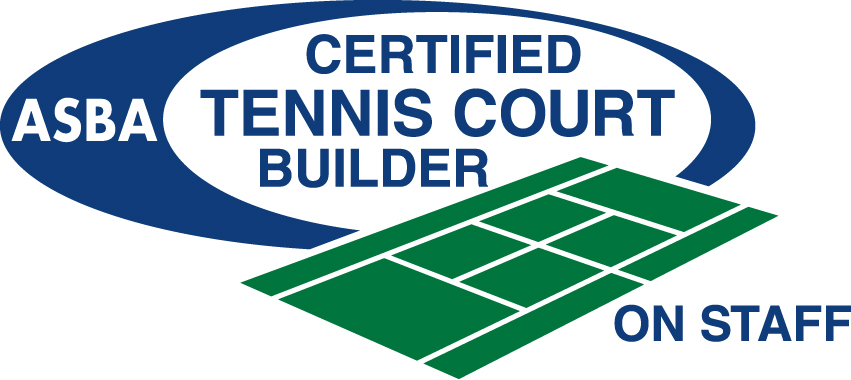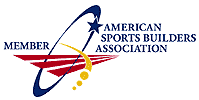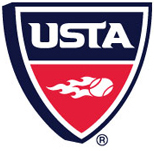HydroGrid® Court Maintenance
Maintaining a fast drying tennis court built with the HydroGrid® sub-surface irrigation system is extremely easy! The following procedures are offered as guidelines for maintaining the court although there may be variations due to weather conditions, amount of play and physical location.
- The court should be drag brushed at the end of play each day with all indentations and scuffmarks smoothed out. The court may be drag brushed at other times as required to smooth the surface.
- The playing lines should be brushed clean before play and as required during play.
- The court should be rolled if it becomes soft or if the playing lines should become loose. It is not necessary to roll the court on a regular basis and, given frequent play on the court, rolling will probably be required only on rare occasions.
- The court should be observed periodically following rain to see if any areas (birdbaths) drain more slowly than the rest of the court. Any such areas (which typically occur just behind the baselines) should be checked with a straight edge or string line to determine if a low spot has formed. If the area is determined to be low, then it should be patched by scarifying the area, placing new material, leveling with a straight edge, hand watering and compacting.
- At least once a month, the net should be removed and the court drag brushed several times in a lengthwise pattern. If any excess material, which has collected in the net line, remains following this brushing, it should be scraped level with the adjacent area and removed.
- The HydroGrid® system is installed with the optimum duration of system activation and water level. This will allow the stone base to be saturated during watering so that an adequate amount of moisture is available to the court surface during the following day.
- If dry areas appear in the whole court or in large areas of the court, check the controller (timer) for proper functioning. If the controller is operating properly, then check the clear view filter located next to the water valves outside the court. If the element is dirty or obstructed, turn off the water supply at the manual ball valve, remove the filter element and clean. The filter should be checked at least once every week even if there is no evidence of reduced water flow.
- If one area of the court becomes relatively dry, check the corresponding float valve canister (of which there are six) located at the court perimeter while the system is activated to confirm that the float is operating properly. There should be water flow similar to the other canisters. If water flow appears reduced, the float may be clogged or operating improperly. Remove the float stem and base and check the intake in the base for obstructions. Clean or replace as required.
- If all valves are operating properly and the filter is clean, then additional time should be added to the watering cycle. It is recommended that such adjustments be made in small increments of five minutes. After at least two days on the adjusted cycle with no rain, then a further adjustment may be made if required.
Typically, insufficient time for the water cycle will result in dry areas at the opposite end of a zone from the canister. If a relatively large area is dry, it may be necessary, in conjunction with increasing the daily watering time, to re-charge the base by applying additional cycles using the manual start feature. - If the court is too wet, the watering cycle may be reduced in the same manner.
- If the problem persists, contact our office for analysis and assistance.
Preparing the System for Freezing Temperatures
In areas with occasional freezing temperatures where the courts will be re-opened for play following the freeze and where the freezing temperatures will not be below 28 degrees F or will not persist more than 12 hours, the following steps are recommended to prepare the system:
- Turn off the main ball valve (water supply) before the filter;
- Open the filter drain and drain the water from the filter;
- Using the controller manual start, cycle through the stations for approximately 15 seconds each;
- Set the controller to “off”;
- Open the canisters ( 6 per court) and remove the overflow drain at the elbow to the side of the canister;
If freezing temperatures are anticipated several days in advance, turning the system “off” in advance will lessen the amount of surface expansion during the freeze cycle and the softness which results when the court thaws.
If a hard freeze or extended periods of freezing weather are anticipated, please contact our office (800-282-4415).
Want more information on tennis court installations?




